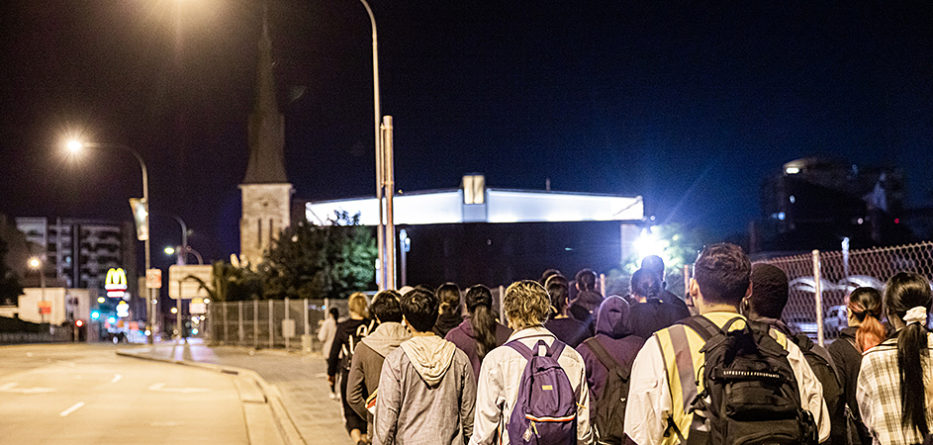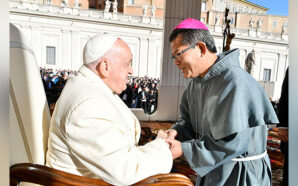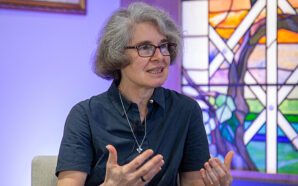After almost three years without travelling anywhere, I embarked on my first international journey. I was struck by the vulnerability of being a traveller.
The language, customs and food were foreign, and I felt uncomfortable and out of place. Even with those who spoke English, my accent immediately betrayed my foreignness. Even the night refused to come, as the Scandinavian midnight sun stayed up 23 out of 24 hours. I was no longer “at home”, a jarring feeling after endlessly “being at home”. I could not take anything for granted. Even simple conversations required effort to bridge the language and cultural gaps. I was confronted with how much easier it is to be at home – and how challenging to be a foreigner.
This sense of strangeness, of “not-being-at-home” evokes something of what St Augustine meant when he called the Church peregrinatio. Notoriously hard to translate, peregrinatio means “foreigner”, “stranger”, “exile”, “migrant” – and “pilgrim”.
What does it mean to call the Church “pilgrim”?
To be a pilgrim Church is to be a journeying people, continually on the move. More than this, it is to be a “home-less” people. This understanding resonates in Vatican II’s Lumen Gentium, article 6: “The Church, while on earth it journeys in a foreign land away from the Lord, is like in exile.” The pilgrim travels far from home, facing many dangers, moving without rest.
This sense of Church as pilgrim is also central to Pope Francis. In Evangelii Gaudium, he insists that the Church is “first and foremost a people advancing on its pilgrim way towards God.” In a 2021 address, he says, “When the Church stops, she is no longer Church, but a beautiful pious association which imprisons the Holy Spirit.” Journeying is part of our nature as Christians – Church is not a “what,” it is who we are. We are pilgrim. Being pilgrim means to be not at home; to be vulnerable, but also enriched by the journey.
Pilgrim Church is not meant to be an individualistic image; pilgrims travel together. In Christian thinking, we travel with the entire communion of saints. This sense of “journeying together” is being evoked by Pope Francis’ concept of synodality. The Preparatory Document for the 2023 Synod states: “Our ‘journeying together’ is, in fact, what most effectively enacts and manifests the nature of the Church as the pilgrim and missionary People of God.” To be pilgrim is to be synodal.
Aside from this, the Church as pilgrim highlights two key dimensions of being Church. Firstly, it refers to the living Church in history, the Church here and now. The Church is not a great ark sailing untouched and impervious over the choppy and dangerous waters of history. Instead, the Church is a pilgrim people, living in and with the world. This understanding is reflected by the opening lines of Vatican II’s Gaudium et Spes:
“The joys and the hopes, the griefs and the anxieties of the people of this age, especially those who are poor or in any way afflicted, these are the joys and hopes, the griefs and anxieties of the followers of Christ.”
As pilgrim, the Church journeys within history, not outside of it. This Pilgrim Church must be humble, open to recognising the Spirit at work in other cultures and languages, not just reinforcing the status quo. Walking a pilgrim path is one of hardship and struggle – but also of rebirth through conversion. So, the image of “pilgrim” reflects the historical nature of the Church.
Secondly, the Church as pilgrim highlights the connection between Church and Kingdom. The Church is not moving purposelessly, like a mouse running on a wheel, going nowhere. The Church is journeying always towards the Kingdom of God. This is what brings hope to the sometimes dark and suffering journey of the pilgrim people. There is a destination, a home where we belong, and that destination is with God.
Understanding the Church as pilgrim reminds us of a certain “now-but-not-yet” that is part of being Church.
As Gaudium et Spes states, in article 48, “The Church…will attain its full perfection only in the glory of heaven.” As such, the Church is called always to conversion and repentance. Repentance is a key part of being pilgrim, along with the humility to recognise that we are not yet what the Spirit calls us to be.
Of course, we do not know what the Kingdom will be like. But Scripture gives us an idea: “See, the home of God is among mortals. He will dwell with them; they will be His peoples, and God Himself will be with them and be their God; He will wipe every tear from their eyes.” (Rev 21:3-4). For now, we are a wandering people; but we are walking homeward. Under the circumstances, what else can we be but a pilgrim Church?
Dr Antonia Pizzey is a Postdoctoral Researcher at Australian Catholic University’s Research Centre for Studies of the Second Vatican Council. Dr Pizzey has a PhD in Theology from ACU and is a lecturer at the university’s School of Theology. Her research focuses on Receptive Ecumenism and the Church as “pilgrim”.
This article was originally published in the 2022 Season of Creation | Spring 2022 edition of the Catholic Outlook Magazine. You can pick up your copy of the magazine in parishes, schools and offices across the Diocese of Parramatta now or you can read the digital version here.









